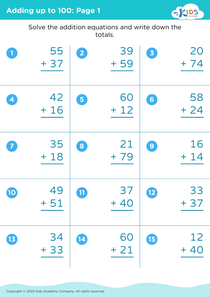Reading analog clocks Adding up to 1000 Worksheets for Ages 6-8
3 filtered results
-
From - To
Unlock your child's potential with our "Reading Analog Clocks Adding Up to 1000 Worksheets" designed specifically for ages 6-8! These engaging worksheets blend time-telling skills with math concepts, helping young learners boost their confidence in both areas. Each worksheet offers fun, illustrative activities that teach kids how to read analog clocks accurately, while also practicing addition skills up to 1000. Perfect for at-home learning or classroom activities, these resources support key learning objectives, fostering essential skills in a playful way. Empower your child to master the art of timekeeping and arithmetic! Explore our worksheets today for an enriching learning experience.
Reading analog clocks is a fundamental skill that has significant importance for children aged 6-8. Understanding analog time enhances cognitive development, as it requires children to engage in mathematical thinking and improve their spatial awareness. Learning to read an analog clock sharpens their ability to understand time concepts, such as elapsed time, sequencing, and time management.
Moreover, analog clocks promote critical thinking and problem-solving abilities. Children are encouraged to visualize the relationship between numbers and their position on the clock face, which strengthens their overall number sense. This skill is not only essential in daily life but also lays a foundation for more advanced mathematical concepts they will encounter in later grades.
Additionally, knowing how to read an analog clock allows children to connect with broader cultural practices and routines. For instance, many public spaces, schools, and homes still display analog clocks. By familiarizing themselves with this form, children can feel more confident in navigating these environments.
Ultimately, teaching kids to read analog clocks not only equips them with practical skills but also fosters a sense of responsibility, independence, and encourages timely habits—traits that are vital in both academic and personal life. Parents and teachers play a crucial role in guiding and enriching this learning journey.


















